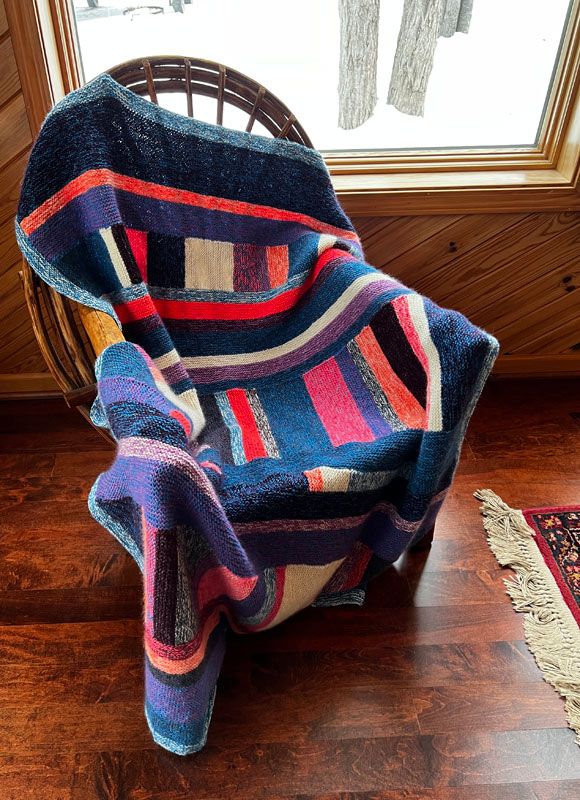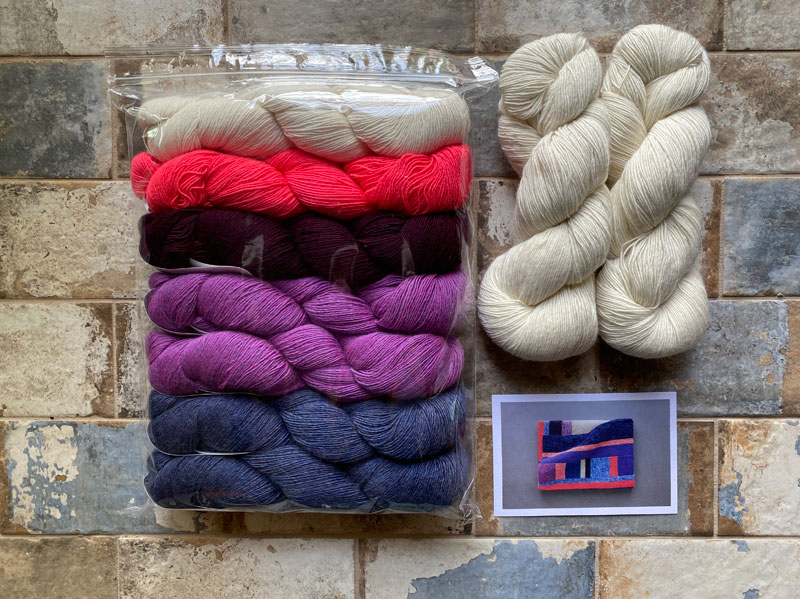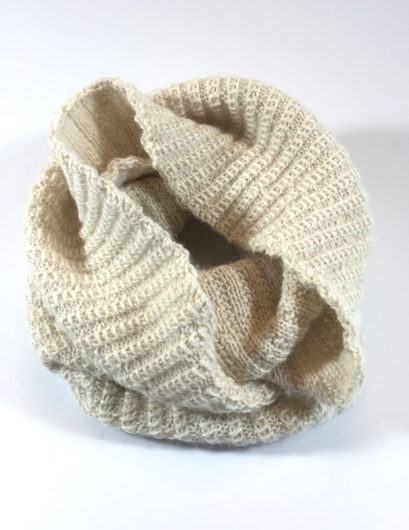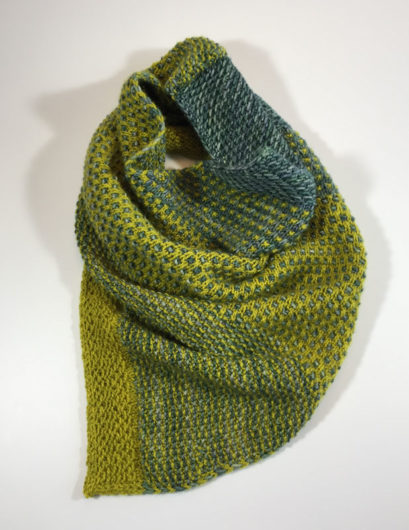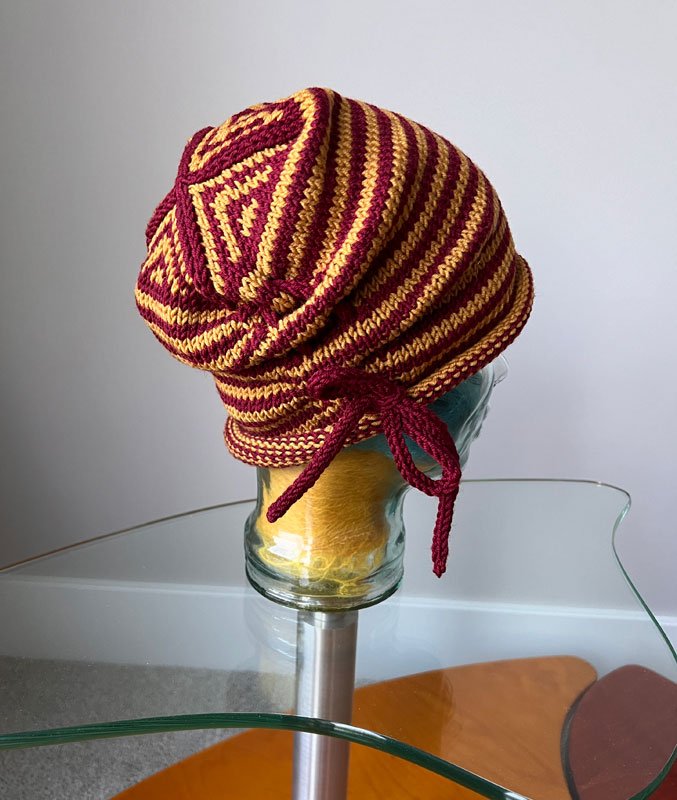
This hat was a pleasure to knit. I’d had a few not-great knits preceding it. The comfort and rhythm of a well-designed pattern was very welcome. It’s a Knitty freebie: Erica Jackofsky’s Minty. I’d seen Minty pop up on various Ravelry forums for years. Recently I finally knit it. I used Plymouth Yarns Worsted Merino Superwash Solid. Great hat design with a lot of flexibility in how it can be worn.
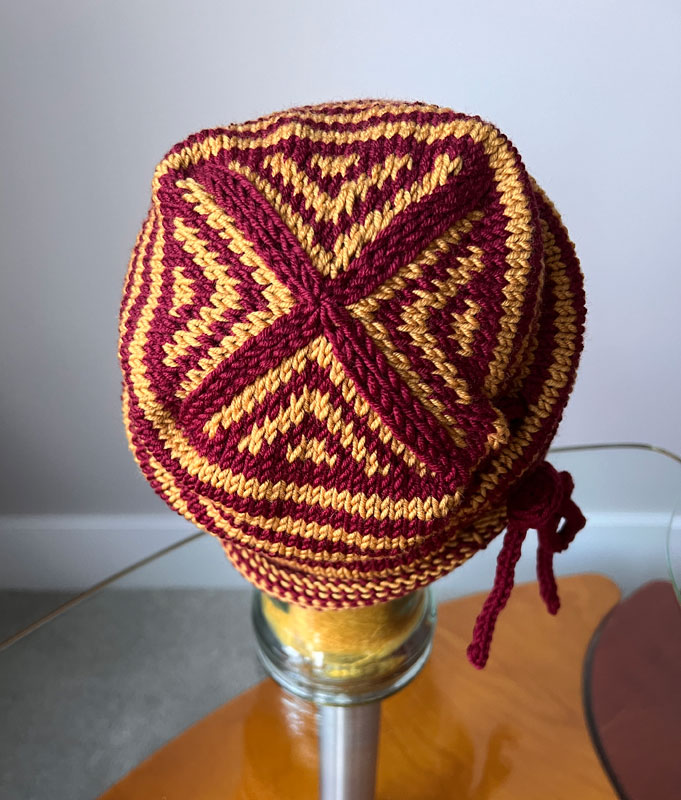
Until I downloaded and read the pattern I was a tad put off by the I-cord side bow. But it’s actually an exceptionally good way to have this hat create its side gathers. You knit two yarn-over columns spaced equidistant in the body of the hat. Once you complete the crown, you knit a length of I-cord and thread it through the yarn overs. No welts to knit. Wearers can decide how extravagant they want the gathers to be.
The colorwork in the crown decreases is easy peasy. No longish expanses between colors mean no floats to catch. This was the first hat that my very stylish 30-something niece chose from my pick-your-hat stash. She was choosing for her two sisters as well. But this one she laid claim to immediately and wore around my house and eventually out the door.
Lately I’m trying hard to use up (basically) all the yarn I’m working with. After completing one accessory project I’ve been casting on for another in the same yarn. It’s a hoot to see the same yarn knit in different patterns. And I don’t end up with a bunch of oddments.
Next up is another pattern I’ll definitely be knitting again: Joji Locatelli’s Odd Stripes hat.
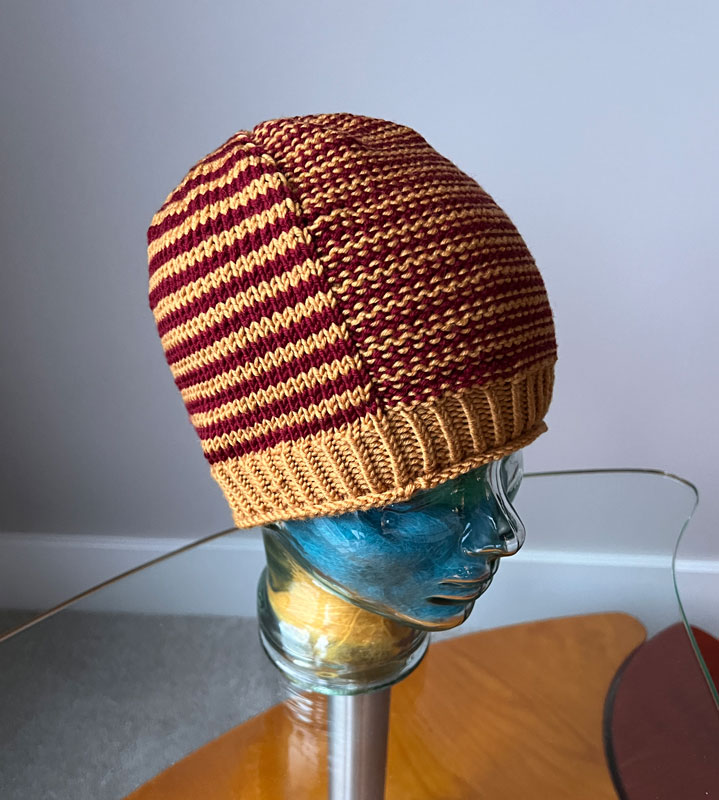
This hat is another easy knit. Two-row stripes. At one point in the round you change to reverse stockinette instead of stockinette. The effect is very pleasing. And the crown decreases retain the half /n half look. Sometimes simple things really are the best.
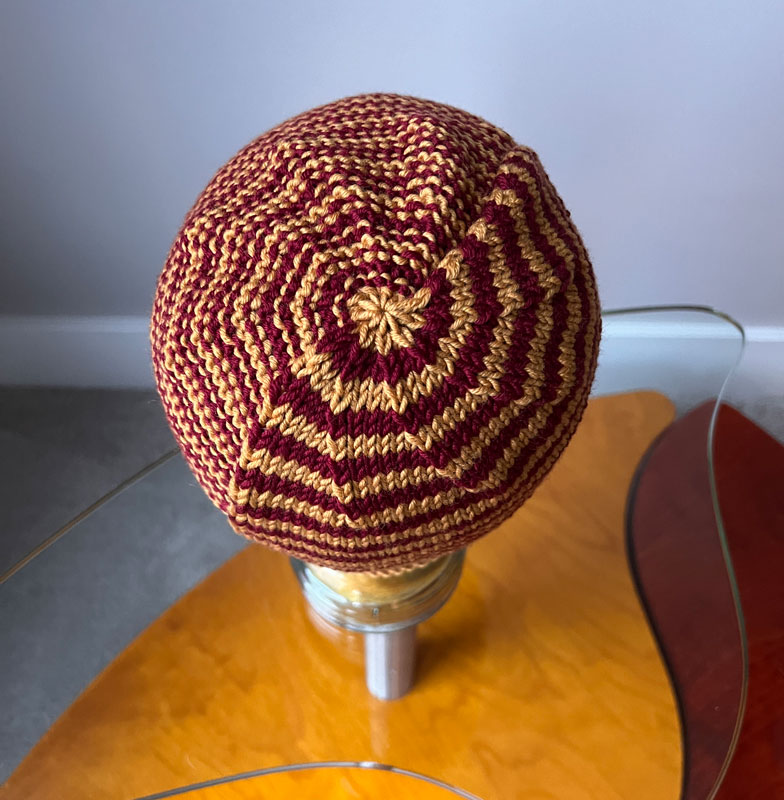
And if you weave the yarn tails in carefully you’ll have a completely reversible hat.
Next up is Melanie Berg’s Rainy Day set, both hat and fingerless mitts. I knit my set in yarn that’s been in my stash since 2017. It’s Lux Adorna’s 100% cashmere sport, now discontinued. I was saving the yarn for some special knit even though I’d purchased it during a shop closing and it was marked down very substantially. I finally decided now was the time and this was the pattern.
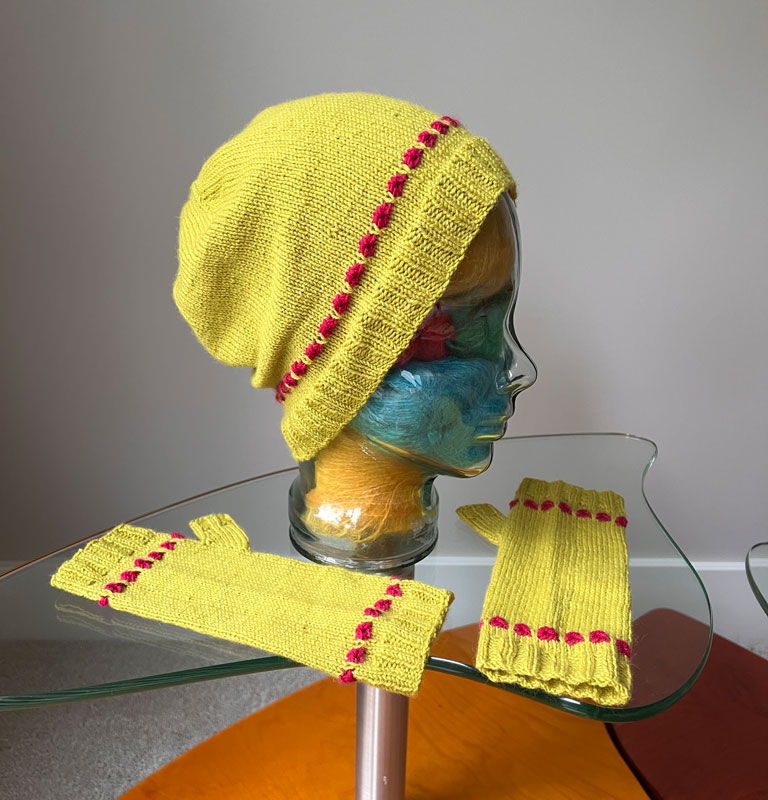
Obviously this is another very simple pattern. I wouldn’t have bothered with it but for what Berg calls the “starburst” detail. I see it as a rosette but, whatever, that detail was too hard to resist.
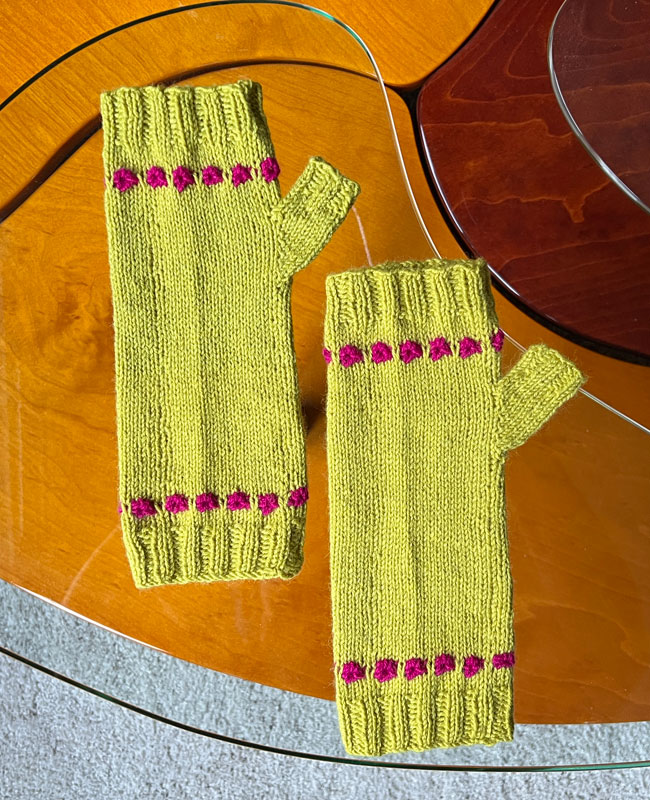
Here’s the starburst close up.
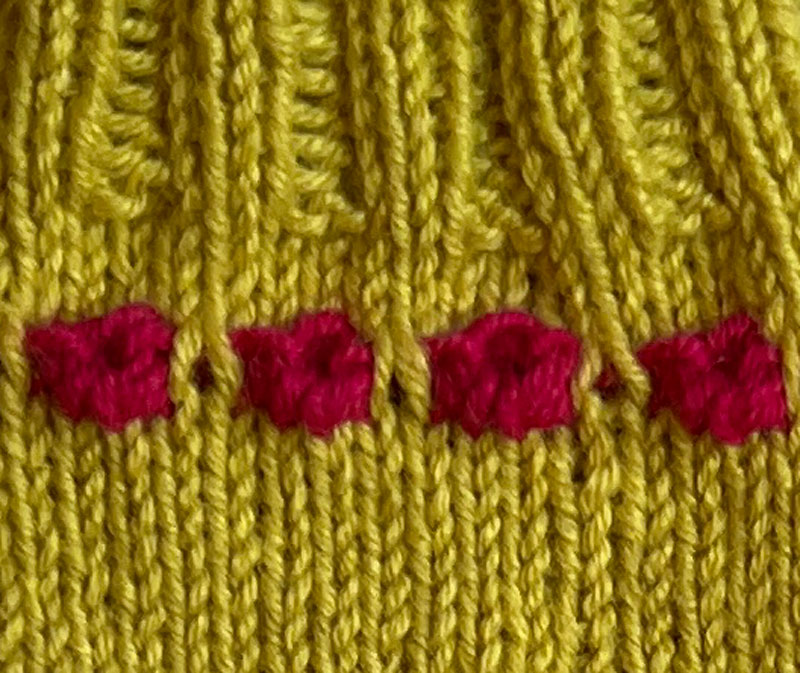
Here’s another look at the hat.
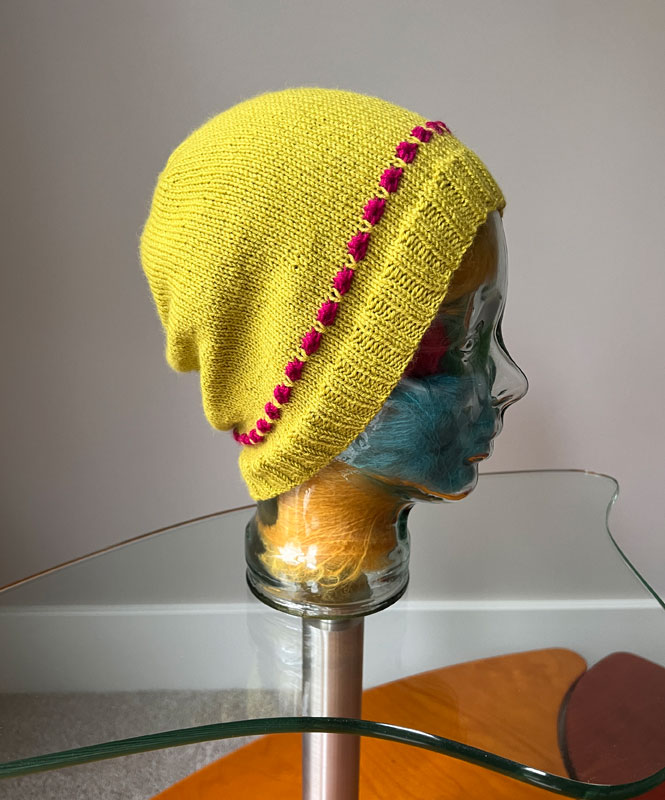
With its whirlwind crown.
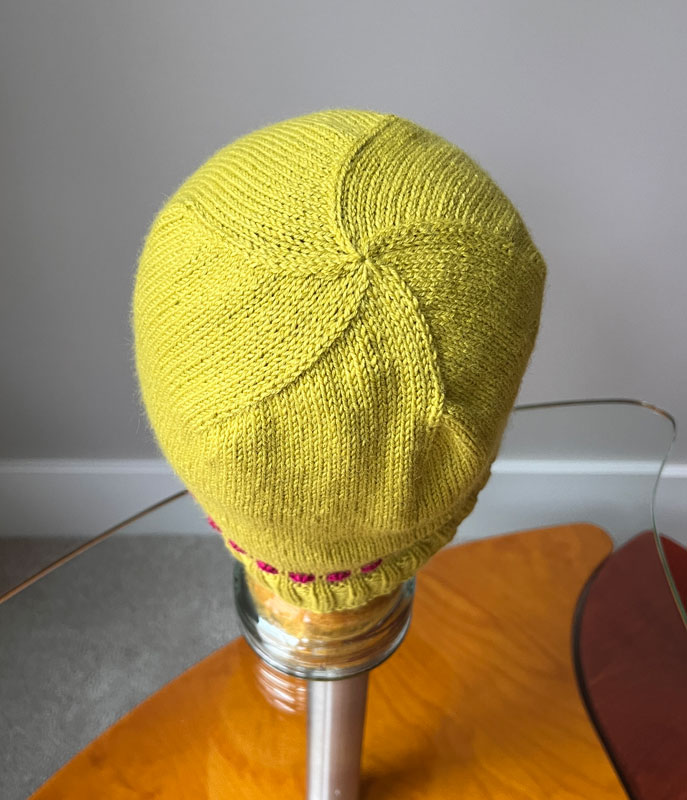
Berg’s pattern is completely sweet. I’ve knit the mitts once before (see the second half of the post). It’s definitely a pattern worth a repeat knit. If I knit the mitts or the hat again I wouldn’t use such a limp version of cashmere. Even after a thorough soak the hat just doesn’t seem to have the oomph I’d expect.
I gave the same yarn another go in Classic Ribbed Hat, a Purl Soho freebie.
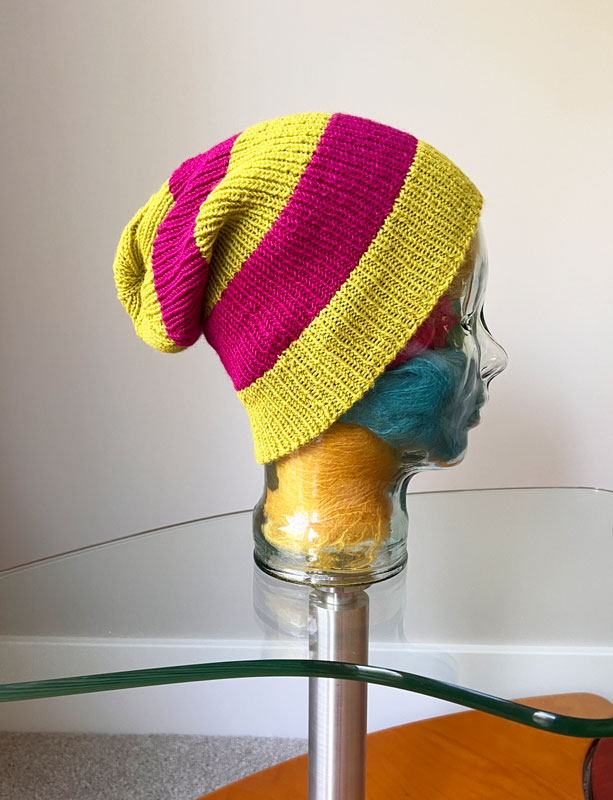
The one-by-one rib helped the yarn deliver a tad more body. A tad. I might have overdone it on the slouch though.
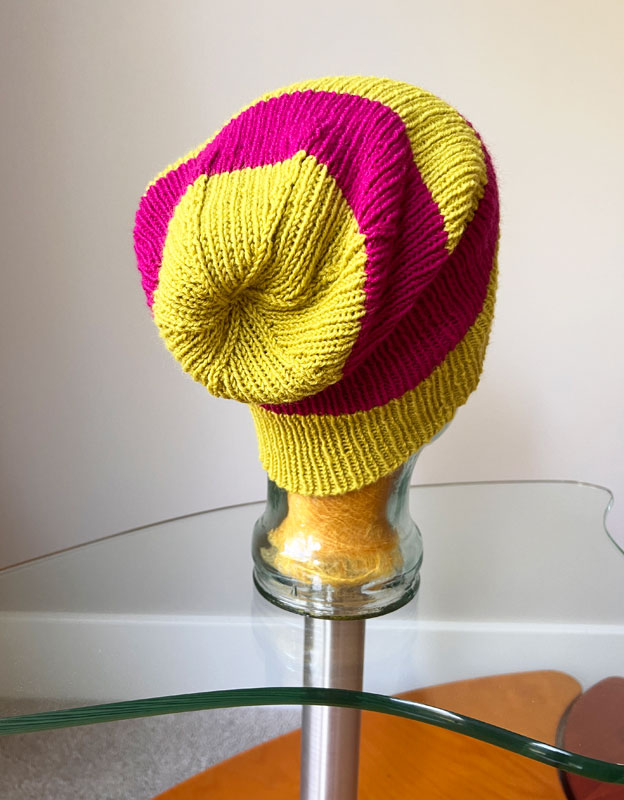
My plan was to knit a deep folded cuff to help keep ears cozy warm. Word to the wise (I wasn’t), figure out where that fold will end up before you knit wide stripes. Or maybe just follow the Purl Soho pattern for stripe placement and all will be well. My version sort of works even as a cuffed ribbed hat though. But if the brim is going to look right it will take more precision than most wearers will want to bother with.
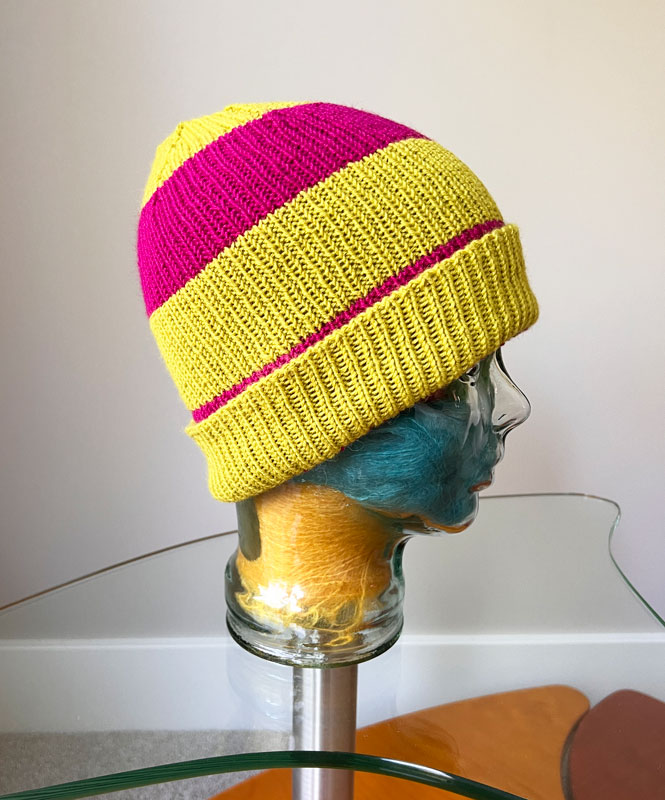
Again, well-behaved crown decreases. All my fashionista fellow-knitter niece needed to hear was “cashmere” and she was “all in” on these hats. They show off her magenta-streaked dark hair quite nicely.
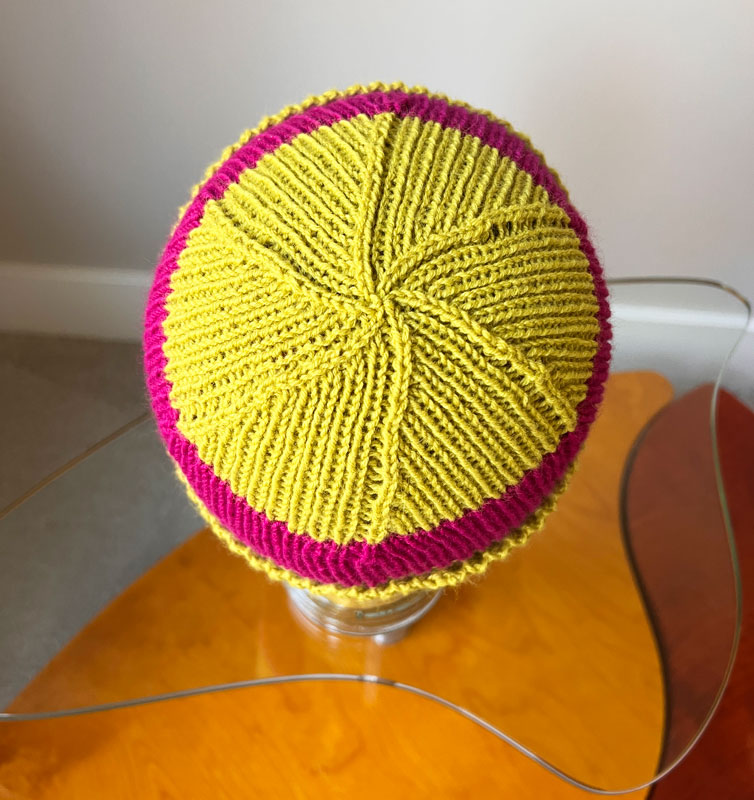
Same yarn. Different knits. Great fun.

